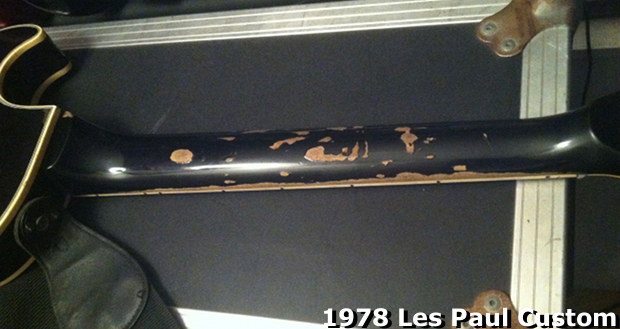Bent Out of Shape: Improve Your Control Over Vibrato

Vibrato is one of the most expressive techniques for any soloist.
It allows you the opportunity to imprint your own touch or feel into any performance. Much like a fingerprint, every guitarist will have his or her own unique and individual vibrato.
Many new guitarists may overlook the technique, but as you begin to develop your own style, you will realize it's an extremely powerful technique.
There are two important factors to consider when developing your vibrato; feel and control. Feel is something that will develop over time, and eventually you will have a strong instinct for the right vibrato in any given situation. You will also need the finger strength and technique to control a good, strong vibrato.
This mechanical aspect can be practiced with exercises such as this one:
Practice your vibrato to a metronome at different frequencies. Time your vibrato so the peaks land on the down beat of each click, making a 1/4-note pulse. Then double the frequency to 1/8 notes with two peaks for every click. Depending on how fast you set your metronome, you might be able to try faster frequencies such as triplets or 1/16 notes.
In my example, the metronome was set to 120 bpm, and I played 1/4 notes, 1/8 notes and triplets. You can use any fret on the neck, and you should practice in as many different positions and tempos as you can. This may seem simple and mechanical, but it will help develop the muscles in your fingers.
All the latest guitar news, interviews, lessons, reviews, deals and more, direct to your inbox!
Remember there are no strict rules, but your vibrato should be musical and have a vocal quality. I use a fairly aggressive approach to my vibrato. Using .11 gauge strings allows me to really dig in without going out of tune. To demonstrate, here's a photo of the neck from my 1978 Les Paul:

You can see the finish has started to wear away from years of use.
I'd like to end with an example inspired by John Sykes, who has a very strong, accurate vibrato. In some songs, he has used wide, aggressive vibrato combined with harmonics to create some interesting effects. You will need a lot of gain from your amplifier, but with some practice, you can easily master this trick to create a siren-like effect. You can also re-pick the harmonic without interrupting your vibrato to fake an infinite-sustain-style effect:
Will Wallner is a guitarist from England now living in Los Angeles. He recently signed a solo deal with Polish record label Metal Mind Productions for the release of his debut album, which features influential musicians from hard rock and heavy metal. He also is the lead guitarist for White Wizzard (Earache Records) and in 2012 toured Japan, America and Canada. Follow Will on Facebook and Twitter.
